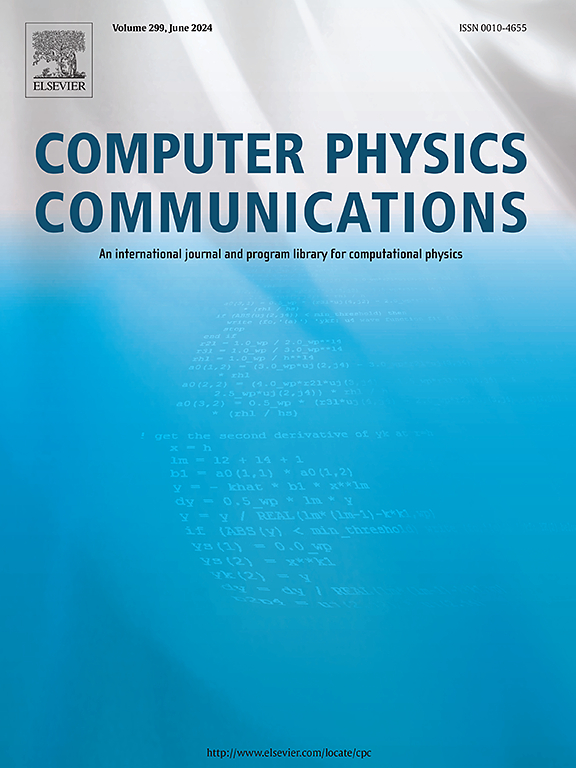用无条件稳定的有限元法建立外部隐形超材料的时域数学模型
IF 7.2
2区 物理与天体物理
Q1 COMPUTER SCIENCE, INTERDISCIPLINARY APPLICATIONS
引用次数: 0
摘要
由于外隐身装置的隐身对象在装置外部,不受装置空间的影响,也不需要特殊材料的包裹,因此外隐身装置具有重要的研究价值。本文基于光学坐标变换和洛伦兹色散模型,构建了圆柱形外隐身装置的时域数学模型,并建立了无条件稳定的时域有限元方案,采用 Leapfrog-ADI 法和有限元法相结合的方法模拟电磁波在外隐身装置中的传播,并证明了该方法的无条件稳定性。时域数值模拟验证了时域外部隐形装置模型的理论分析和 FETD 方法的有效性。对于不同的入射波辐照,外斗篷呈现出不同的工作状态,不同时刻的散射方向图和散射功率验证了整个过程中电磁场的散射情况。本文章由计算机程序翻译,如有差异,请以英文原文为准。
Time-domain mathematical modeling of external cloak metamaterials with an unconditionally stable finite element method
Since the cloaked object of the external cloaking device is outside the device, it is not affected by the space of the device and does not need to be wrapped with special materials, so the external cloaking device is of important research value. In this paper, a time-domain mathematical model of a cylindrical external cloaking device is constructed based on optical coordinate transformation and Lorentz dispersion model, and an unconditionally stable time-domain finite element scheme is developed to simulate the electromagnetic wave propagation in the external cloak by using a combination of the Leapfrog-ADI method and the finite element method, and the unconditional stability of the method is proved. The time-domain numerical simulations validate our theoretical analysis of the time-domain external cloaking device model and the effectiveness of the FETD method. For different incident wave irradiation, the external cloak shows different operating states, and the scattering direction maps and scattering power at different moments verify the scattering of electromagnetic field during the whole process.
求助全文
通过发布文献求助,成功后即可免费获取论文全文。
去求助
来源期刊

Computer Physics Communications
物理-计算机:跨学科应用
CiteScore
12.10
自引率
3.20%
发文量
287
审稿时长
5.3 months
期刊介绍:
The focus of CPC is on contemporary computational methods and techniques and their implementation, the effectiveness of which will normally be evidenced by the author(s) within the context of a substantive problem in physics. Within this setting CPC publishes two types of paper.
Computer Programs in Physics (CPiP)
These papers describe significant computer programs to be archived in the CPC Program Library which is held in the Mendeley Data repository. The submitted software must be covered by an approved open source licence. Papers and associated computer programs that address a problem of contemporary interest in physics that cannot be solved by current software are particularly encouraged.
Computational Physics Papers (CP)
These are research papers in, but are not limited to, the following themes across computational physics and related disciplines.
mathematical and numerical methods and algorithms;
computational models including those associated with the design, control and analysis of experiments; and
algebraic computation.
Each will normally include software implementation and performance details. The software implementation should, ideally, be available via GitHub, Zenodo or an institutional repository.In addition, research papers on the impact of advanced computer architecture and special purpose computers on computing in the physical sciences and software topics related to, and of importance in, the physical sciences may be considered.
 求助内容:
求助内容: 应助结果提醒方式:
应助结果提醒方式:


